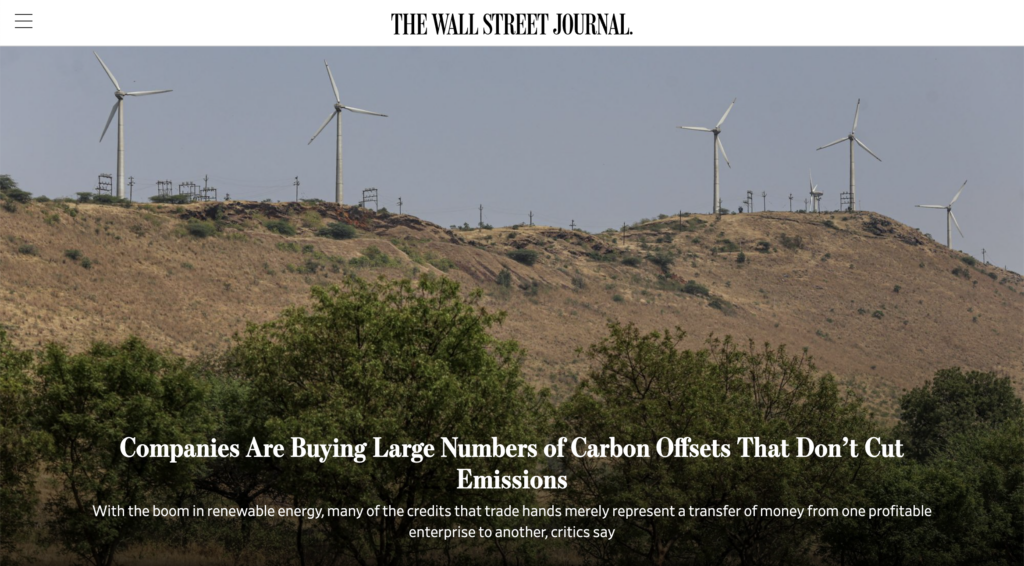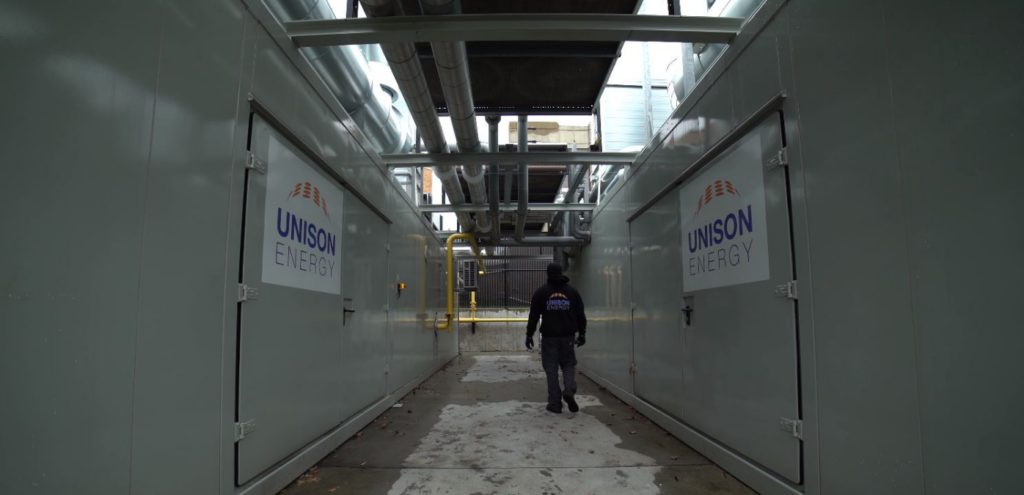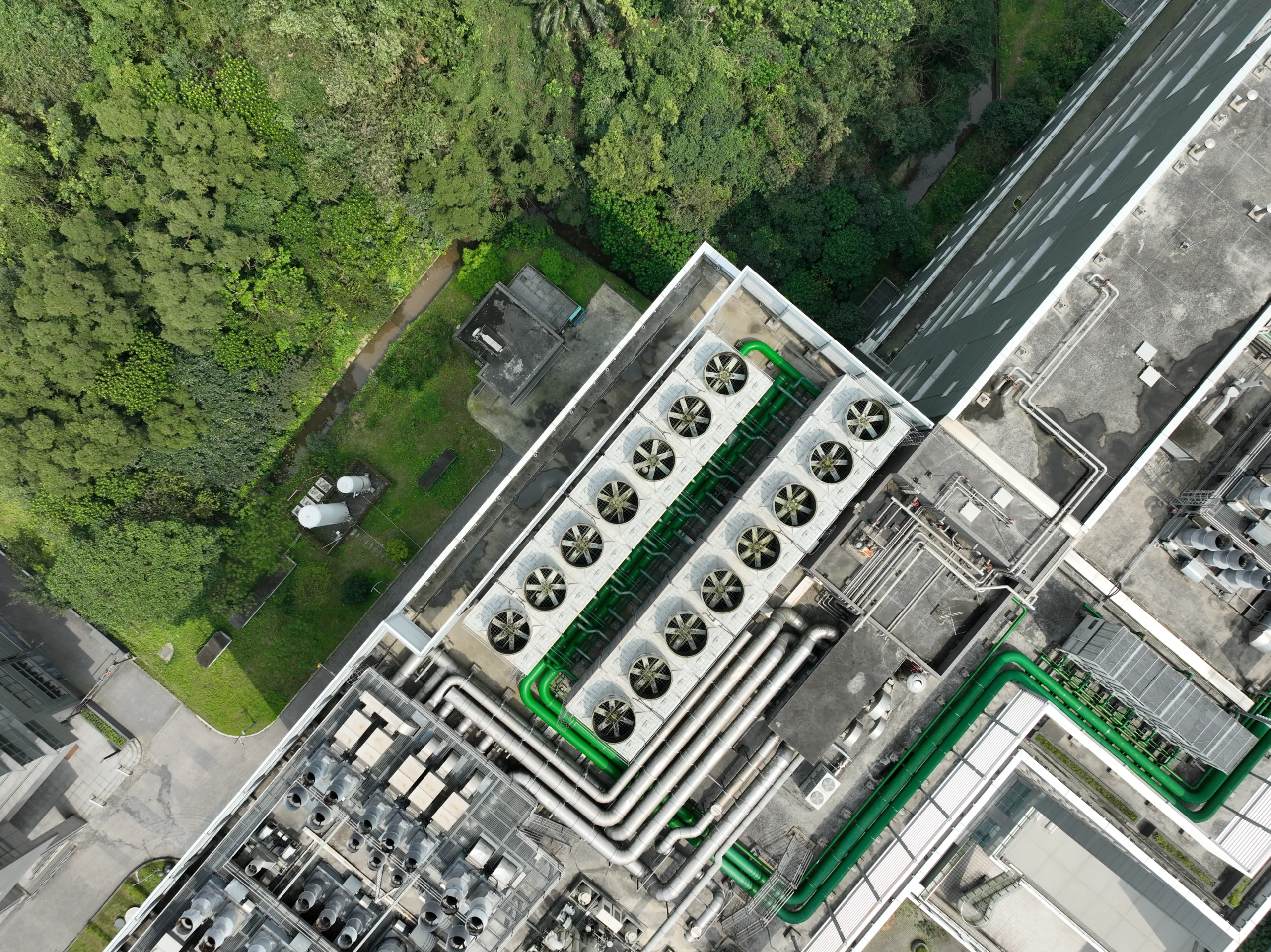The Problem with Carbon Offsets

Carbon offsets have been popular over the last few years, but recent reporting suggests that these measures are not as effective at reducing emissions as on-site measures.
Companies are under pressure from investors, customers, and governments to reduce their greenhouse gas (GHG) footprints, and many of them are setting zero-carbon targets of 2050, 2035, or sooner.
In 2021, the market surpassed $1 billion, with 344 million credits issued. However, recent reporting by the Wall Street Journal, Bloomberg News, and other outlets point to a problem: carbon offsets don’t always have the intended impact, and overreliance on offsets may be keeping organizations from taking more meaningful action. These pledges are driving the carbon offsets industry to new heights. Offsets are financial credits meant to balance out a company’s carbon footprint by funding projects that help reduce CO2 and other GHG emissions.
A recent Bloomberg Opinion piece “You Can’t Sell Trees No One Cuts Down” explains how some financial firms selling carbon offsets operate on “somewhat fake” pretenses, as many classic carbon offsetting credits rely on promises to not cut down forests that already weren’t at risk. These schemes can end up generating millions of carbon credits for financial middlemen, while no carbon is actually reduced. We see this again in the news with the Associated Press’ recent article about Delta Airlines’ consumer class action lawsuit. The complaint alleges that Delta’s claim that it’s “the world’s first carbon-neutral airline,” relied on carbon offsets that didn’t exist.
While none of this is good news, facilities can still make a more tangible, local impact with on-site generation that cuts real emissions today and integrates emerging technologies for a path to carbon neutrality.
Why Carbon Offsets Have Lost Their Shine
In June 2022, the U.S. Commodity Futures Trading Commission (CFTC) announced it was investigating concerns about carbon credit quality and market integrity. This investigation echoes problems brought to light by recent reporting.
About two decades ago, the U.N. encouraged carbon credits as a way to support renewable energy projects in developing nations. While a successful model at the time, the Wall Street Journal reports that many of these credits are going to already functioning renewable projects — which means the money makes no carbon impact and may end up as profits for middlemen. The article notes, “The end result is that companies looking to offset their emissions are buying credits in vast numbers that do little to help neutralize their carbon output.”
This reflects a key problem with carbon credits: additionality. Carbon credits are meant to support projects or initiatives that aren’t otherwise financially viable. For instance, a company could pay to preserve a landowner’s forest that would otherwise be sold as timber. However, it’s difficult to verify in all cases whether a carbon-reducing measure relies on the offsets, or if it would have occurred anyway.
Bloomberg News found that major companies have used offsets based on forests that were not at risk of deforestation. Many utility scale solar and wind projects sold as virtual power purchase agreements (VPPAs) produce power more cheaply than dispatchable generation and would have gone ahead anyway. All too often, carbon offsets are just a way to increase returns to project investors while providing buyers with a clear conscience.
Another issue is permanence. CO₂ emissions can last for hundreds of years in the atmosphere, but few offset projects will last for this timeframe. In an example addressed by the Wall Street Journal, forestry offset projects are frequently sold as long-term carbon sequestration. However, carbon experts are increasingly skeptical of these claims as these forests are subjected to forest fires, insect pests, and land ownership transfers that nullify offset agreements.
Finally, offsets may be limiting overall decarbonization efforts because they reduce incentives to address carbon emissions on site. Paradoxically, offsets may actually prevent society from shifting quickly enough toward strategies and solutions that could make a more tangible impact over the long term. As an expert explains in the Wall Street Journal, carbon offsets are “one of the tools in the toolbox… but the first one has to be reducing emissions radically.”

On-Site Power Generation Offers Real Emission Reductions
Clearly, a better plan for decarbonization is needed. Recent research supports tackling emissions on site. Increasingly, more facilities are turning to on-site power as a way to achieve real, lasting, local GHG emission reductions.
Sites with sufficient space should implement solar, which is increasingly inexpensive, qualifies for the Inflation Reduction Act 30% tax credit, and can typically help cut emissions by 10-20%. Solar is most impactful during daily usage peaks, when the sun is shining and grid utilities are more polluting. Solar has three drawbacks. First, it is impossible to cover the full site load 24 hours per day. Second, it requires significant amounts of space. Third, it doesn’t reduce carbon footprint for a site’s boiler usage.
Cogeneration is another relevant solution, especially for industrial facilities or those with high thermal loads. Depending on the grid mix in the state, cogeneration can reduce a site’s carbon footprint by up to 40% vs. the utility. It also qualifies for the 30% tax credit, and can be equally or more effective than solar because it requires significantly less space, operates at full load 24 hours a day, and can offset the natural gas used for thermal purposes, which reduces Scope 1 emissions.
Emerging Technologies Provide a Path Toward Net Zero
For facilities looking to make good on their zero-carbon pledges, two promising technologies are rapidly entering testing and adoption mode: hydrogen and carbon capture & sequestration (CCS). Both can be integrated with a cogeneration system to offer additional emission reductions.
Most combined heat and power (CHP) systems today are “hydrogen ready” and are capable of running on hydrogen with minimal modifications once it becomes more widely available. With the Inflation Reduction Act supporting low-carbon hydrogen at up to $3/kg, this fuel will become an option more broadly.
The second interesting development is with CCS. Because most facilities require reliable 24/7 electric production and natural gas for boilers, capturing the carbon and sequestering it provides a complete zero-carbon solution. With Section 45Q tax credits priced at $85/ton of CO₂, encouraging CCS project development, this could be a cost-effective option for more facilities within 12-24 months.
Unison Energy: Your Partner for a Better Path to Carbon Neutral
There’s a place for verified carbon offsets as part of a larger carbon neutral strategy, but they should be reserved for after on-site measures have been fully implemented.
Although offsets are considered an inexpensive way to cut emissions, with an energy services agreement (ESA) where Unison Energy builds, owns, and operates the microgrid, facilities can lower their operating costs and reduce carbon footprint without investing capital in the project.
Unison Energy microgrids can cut your GHG emissions while offering energy resiliency and reducing energy costs. We design our microgrids using today’s proven technologies — with a pathway to future technologies. We can make simple retrofits to integrate new hydrogen or other renewable fuels, or capture carbon for sequestration, so your facility can meet your zero carbon goals.

Unison Energy’s microgrids help companies lock in lower energy costs, energy resiliency, and reduced carbon footprints. Click here to contact a Unison Energy sales representative.
Energy insights, delivered
Subscribe for more content.
Related Blogs

From Kill Switches to Tariffs: Policy Shifts Reshaping U.S. Data Center Growth
The Energy Crisis in Healthcare: Mitigating Financial Losses Through Reliable Power Solutions
Deadlines for the Inflation Reduction Act